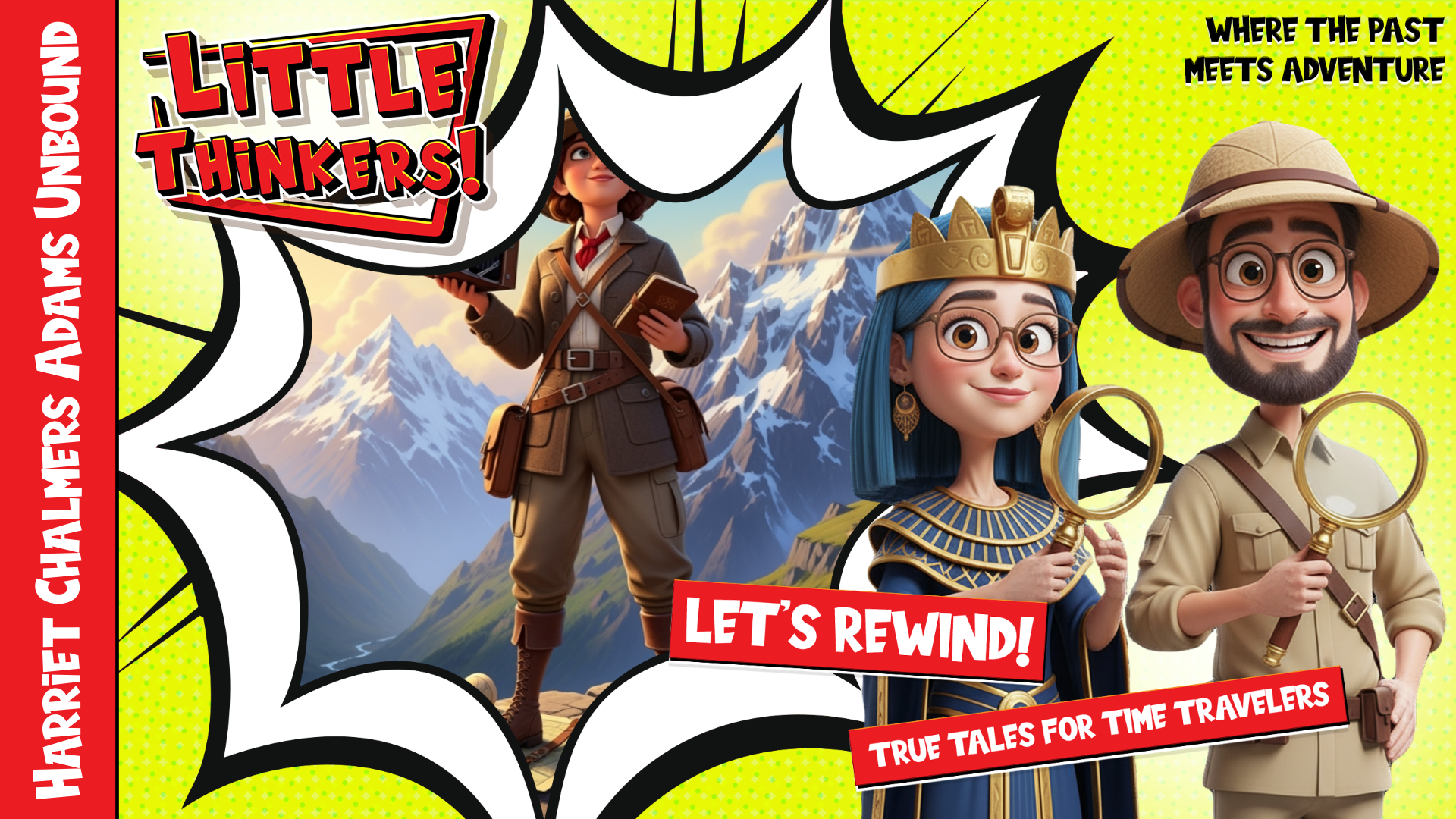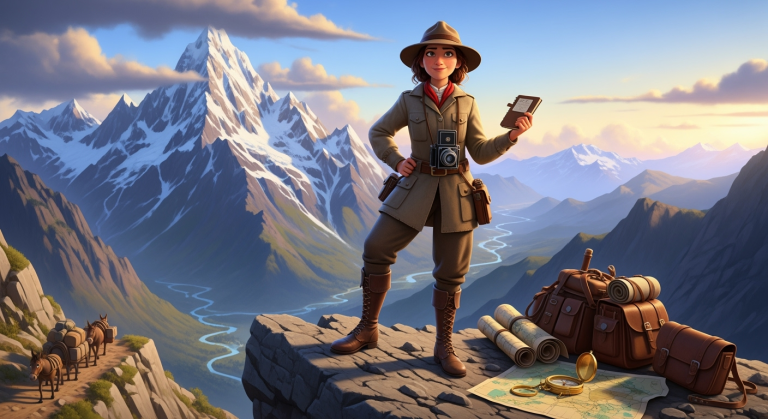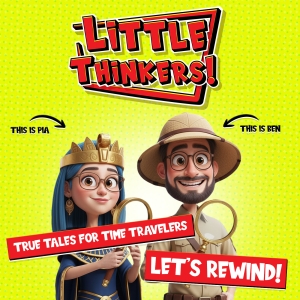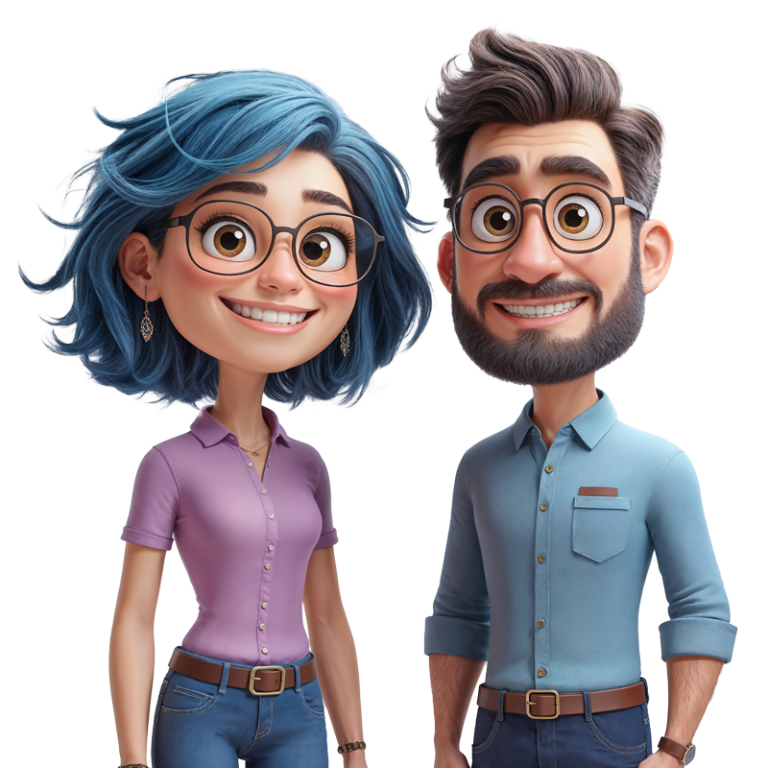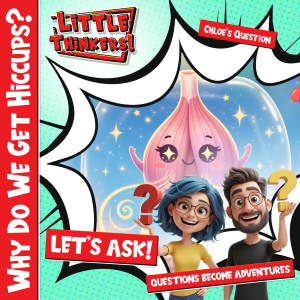The Amazing Adventures of Harriet Chalmers Adams: A True Explorer’s Journey
Imagine This Amazing Scene
Picture this: a young woman stands on the deck of a steamship in 1904, watching the California coast disappear into the morning mist. In her hands, she holds a camera and a worn leather notebook. Her name is Harriet Chalmers Adams, and she’s about to begin one of the most incredible adventures in history! She and her husband Franklin are setting off to explore all of South America – not by airplane or fancy car, but on horseback, in canoes, and on foot. What an amazing way to see the world!
A Girl Who Loved Adventure from the Start
Harriet wasn’t born in some faraway land – she grew up right in Stockton, California, in the late 1800s. But even as a little girl, she knew she was different. While other children played inside, Harriet rode horses through the Sierra Nevada mountains with her father! Can you imagine galloping across rocky trails and camping under the stars when you’re just a kid?
Her father taught her how to read maps, choose safe trails, and respect the people who lived on the land. These weren’t just fun trips – they were like a school for adventure! Harriet learned Spanish from ranch workers and listened carefully to stories about distant places. She practiced being brave but never reckless, kind but never weak.
Fun Fact!
Harriet was mostly homeschooled because regular school couldn’t keep up with her love of exploring! She learned more from riding trails and meeting people than she ever could from sitting at a desk all day.
The Greatest Adventure Begins
In 1904, when Harriet was in her twenties, she and Franklin set sail for South America with the most daring plan ever. They wanted to travel through every single country in South America! This wasn’t like taking a vacation – there were no hotels, no GPS, no emergency phones. They had to carry everything they needed and trust the kindness of strangers.
Their journey lasted three incredible years and covered about 40,000 miles! That’s like traveling around the entire Earth almost twice! They rode horses up mountain passes so high that breathing was hard. They paddled canoes down rushing rivers where one wrong move could mean disaster. They walked through rainforests where the trees were taller than skyscrapers and the sounds of wild animals echoed all around them.
So Amazing It’s Hard to Believe!
- They climbed mountains over 14,000 feet high – that’s almost three miles straight up!
- They crossed the Andes Mountains 75 times during their journey
- Harriet learned to speak several indigenous languages to talk with local people
- They traveled with pack mules that carried their cameras, notebooks, and camping gear
Danger and Courage in the High Mountains
One day high in the Andes Mountains, Harriet found herself riding a mule along a path that was only as wide as a sidewalk – with a cliff dropping thousands of feet below! Storm clouds were gathering, and the wind was so strong it could blow a person right off the mountain. What would you do in that situation?
Harriet didn’t panic. She carefully got off her mule and walked, leading the animal step by step along the dangerous path. Her hands were freezing cold, and her heart was beating fast, but she chose the safe path instead of the quick path. That’s real courage – not charging ahead without thinking, but making smart choices even when you’re scared!
Life Back Then
In 1904, there were no weather reports, no rescue helicopters, and no cell phones. Travelers had to depend on local guides who knew the mountains, and they had to be ready for any kind of weather or emergency. People carried everything they needed on their backs or on pack animals.
Meeting Amazing People Everywhere
What made Harriet special wasn’t just that she was brave – it was that she was respectful and curious about everyone she met. In every village and city, she asked permission before taking photographs. She learned local languages and always said thank you. She wrote down the names of plants and animals, but she also wrote down the names of the people who helped her.
In busy markets in Lima and La Paz, she watched families cook traditional foods and admired the beautiful textiles woven by skilled hands. She realized that good traveling isn’t about rushing from place to place – it’s about having conversations and making friends. Every person she met taught her something new about their homeland.
Did You Know?
- Harriet spoke Spanish, Portuguese, and several indigenous languages by the end of her travels
- She always carried gifts to trade fairly with local people
- Her camera was huge and heavy compared to today’s cameras – it weighed about 10 pounds!
- She wrote detailed notes every single day of her journey
Making History as a Female Explorer
When Harriet returned to the United States in 1907, something incredible happened. National Geographic magazine, one of the most famous magazines in the world, wanted to publish her stories and photographs! Even more amazing – in 1908, she became the first woman ever invited to give a speech at the National Geographic Society. Can you imagine how nervous and excited she must have been?
When she walked onto that stage wearing her sturdy traveling boots, she didn’t boast about her adventures. Instead, she thanked all the people who had helped her along the way. She showed her audience that the world was full of kind, interesting people who were eager to help travelers who treated them with respect.
Women Explorers Were Rare!
In Harriet’s time, most people thought women couldn’t handle dangerous adventures. Many clubs and societies didn’t even allow women to join! Harriet proved them wrong by completing one of the most difficult journeys ever attempted. She showed that courage and kindness were more important than being big and strong.
A War Reporter in Dangerous Times
Harriet’s adventures didn’t stop with South America. During World War One (1914-1918), she became one of the few women journalists allowed to report from the battlefields in France. This was incredibly dangerous work! She walked carefully along muddy paths near the fighting, always carrying her notebook and camera.
But even in this scary situation, Harriet showed the same kindness and respect she had learned in South America. She didn’t ask soldiers lots of questions when they were tired or worried. Instead, she waited patiently and asked gentle questions. She wrote about the courage and friendship she saw, not about the frightening parts of war.
Bringing Stories to People at Home
Harriet’s articles helped people back in America understand what was really happening in the war. She wrote about the brave medics who helped wounded soldiers and the strong friendships that developed between people from different countries who were fighting together.
Following in Columbus’s Footsteps
After the war ended, Harriet had another amazing idea. She decided to retrace the routes that Christopher Columbus had taken across the Caribbean Sea over 400 years earlier! She wanted to see what those places looked like now and meet the people who lived there.
She sailed from island to island in small boats, just like explorers had done centuries before. In busy harbors, she tasted tropical fruits and listened to local music. She compared the old maps and stories to what she could see with her own eyes. Some things matched perfectly, and some things had changed completely over the centuries.
Connecting Past and Present
Harriet was like a detective, comparing old stories to modern reality. She wrote about how some harbors were exactly as Columbus had described them, while others had grown into big cities. She helped people understand that history isn’t just something that happened long ago – it’s connected to our world today!
Opening Doors for Other Women
In 1925, Harriet did something that would help women explorers for generations to come. She helped start the Society of Woman Geographers and became its first president. This was a club where female explorers, scientists, and writers could meet to share maps, trade safety tips, and encourage each other.
Before this society existed, many women felt lonely in their adventures because most exploration clubs only allowed men. Harriet’s organization was like opening a door and saying, “Come in! The world is big enough for everyone who wants to explore it carefully and kindly.”
A Legacy That Lives On
- The Society of Woman Geographers still exists today and has over 500 members worldwide
- Famous members have included pilot Amelia Earhart and anthropologist Margaret Mead
- The society gives out grants to help fund women’s research and exploration projects
- They maintain a library of maps, photographs, and stories from female explorers
A Partnership That Made Dreams Come True
Throughout all her adventures, Harriet had an amazing partner – her husband Franklin Adams. He wasn’t just along for the ride – he was a full partner who helped plan routes, fix equipment, and handle supplies. While Harriet often got the attention because she was the writer and speaker, Franklin’s quiet support made their adventures possible.
Their marriage showed that the best adventures happen when people work as a team. Franklin never minded that Harriet was famous while he worked behind the scenes. They both knew that their success came from combining their different strengths and helping each other every step of the way.
Teamwork Makes Dreams Work
Harriet always gave Franklin credit in her speeches and articles. She understood that great explorations aren’t about one person being a hero – they’re about people working together, trusting each other, and sharing both the dangers and the victories.
A Writer Who Changed How We See the World
Harriet wrote dozens of articles for National Geographic and other magazines during her lifetime. But she didn’t write like many explorers of her time. Instead of bragging about conquering new lands, she wrote about making friends with new people. Instead of claiming to discover places, she wrote about learning from the people who had lived there for generations.
Her photographs showed real families going about their daily lives – children playing, grandparents sharing stories, and skilled craftspeople at work. Every picture and every story carried respect and gratitude for the people who had welcomed her into their communities.
Writing That Made a Difference
Teachers across America used Harriet’s articles in their classrooms because they showed that people all over the world had interesting lives and important stories. Her work helped break down the barriers of fear and misunderstanding that can exist between different cultures.
The Adventure Never Really Ends
Harriet continued traveling and writing until late in her life. She returned to South America many times, always finding new trails to explore and new people to meet. She climbed ancient stone steps at archaeological sites, measured distances not just in miles but in stories, and continued to fill her notebooks with careful observations.
Even when she was older, she kept choosing sturdy boots and wide-brimmed hats. She spoke with the same warm, enthusiastic voice that had captivated audiences for decades. Adventure, for Harriet, wasn’t about being young and strong – it was about staying curious and respectful no matter how old you got.
Adventure Tips from Harriet
- Always ask permission before taking someone’s photograph
- Learn at least a few words in the local language wherever you go
- Choose the safe path over the quick path
- Pack light but always carry a notebook
- Thank everyone who helps you, and write down their names
- Listen more than you speak
A Legacy That Lives On Today
When Harriet died in 1937 after a lifetime of incredible adventures, her friends made sure her work wouldn’t be forgotten. They carefully preserved her photographs, maps, and writings. Today, you can still see her pictures in museums and read her articles in libraries!
The Society of Woman Geographers continues to welcome new members who want to explore and learn. Teachers still use Harriet’s articles to show students that the world is full of fascinating places and amazing people. Her simple message – travel with respect, kindness, and curiosity – feels as fresh today as it did over 100 years ago.
You Can See Her Legacy Today!
- Many museums have exhibits featuring her photographs and equipment
- Her articles are available in digital archives that you can read online
- National Geographic still publishes stories by explorers who follow her example
- The Society of Woman Geographers has a website where you can learn about modern female explorers
What We Can Learn from Harriet’s Amazing Life
Harriet Chalmers Adams showed us that being an explorer isn’t about being the fastest, the strongest, or the loudest. It’s about being curious, respectful, and brave enough to keep learning from other people. She proved that the best adventures happen when we approach the world with open hearts and minds.
Her story reminds us that every person we meet has something interesting to teach us. Every place we visit – even if it’s just a park in our own neighborhood – has stories waiting to be discovered. Adventure doesn’t require traveling to the ends of the Earth. It just requires paying attention to the amazing world that’s all around us.
Today, when you go outside, think like Harriet. Notice the plants and animals around you. Be kind to the people you meet. Ask questions and listen to the answers. Write down what you learn. You might not climb the Andes Mountains or sail across the Caribbean, but you can have your own adventures right where you are!
Start Your Own Adventure!
Remember Harriet’s secret to great adventures: start with respect, add a big dose of curiosity, pack some courage for the challenging moments, and never forget to say thank you. Whether you’re exploring your backyard or dreaming of distant mountains, you’re following in the footsteps of one of history’s greatest adventurers!

